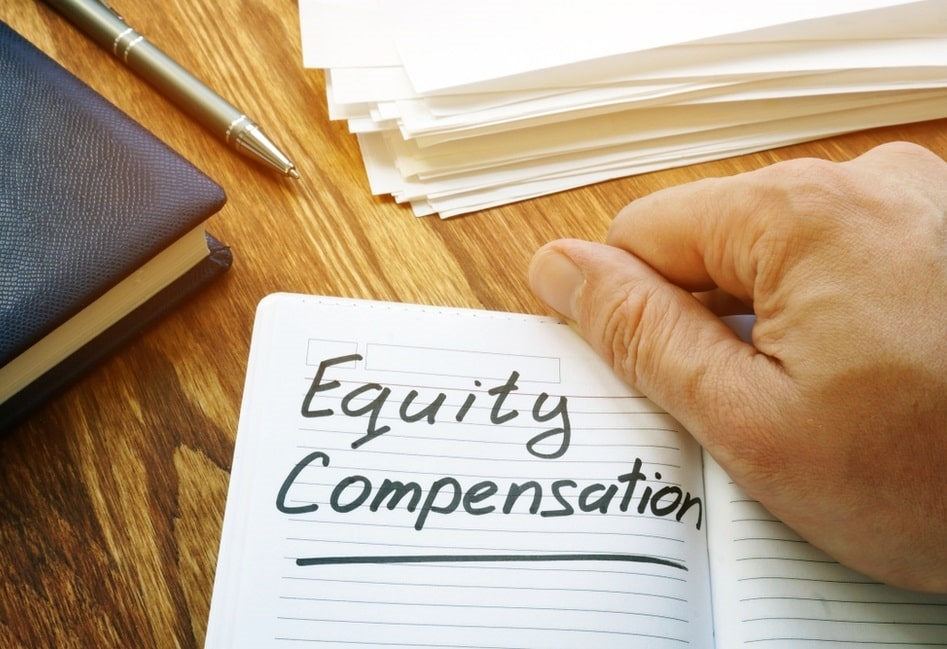
In part one of this blog, I explained what Restricted Stock Units (RSUs) and Employee Stock Options are and how they are taxed. If you missed it, please go back, and read it here.
If you have been receiving stock compensation for several years now, you may have some questions on how to handle these assets strategically. The second part of this blog explores how much company stock is too much and the options (pardon the pun) for limiting exposure to the company that pays your salary.
There are benefits and complications pertaining to decisions surrounding this topic. Creating a strategy that considers the balance between risk exposure and tax liabilities is important when determining your long-term goals and savings needs.
Let’s jump in!
How much company stock should you own, and is there such thing as having too much?
Employees who receive stock compensation often find that, over time, a large percentage of their portfolio is their company’s stock. This creates a dangerous concentration risk because both their portfolio and their job are tied to the success of one company. It is equivalent to putting all your eggs in one basket.
Concentrated equity positions represent the greatest risk to many investment portfolios and should be urgently addressed.
Instead, you want your portfolio to be diversified and span many different geographic areas (US/International), market capitalizations (small/large-cap), sectors (tech, energy, financials, healthcare etc.), and sub-sectors (value/growth.) These components can potentially move in different economic cycles, have low correlations, and react to different risk factors (such as market, currency, sector, and financial risk). This helps smooth the ride in your portfolio and dampen volatility by casting a wide net.
Often, the failure to reduce concentration stems from a lack of understanding of the risks of holding a single stock. An important consideration when deciding what to do with company stock is to evaluate what your financial picture would look like if your company stock had a sudden decline or dropped to $0. Loyalty to your company can backfire if too much of your wealth is tied up in its stock and the price then drops. Just look at what happened to Peloton when Mr. Big died! In December 2020, Peloton was almost $163 per share. Today, it’s below $30. As Enron reminds us, surprises can cause any stock to collapse rapidly. GE was another company with employees who believed in the firm so strongly that they began investing their 401(k)’s in GE stock. Those who did not sell the stock saw their savings cut in half.
As a general guideline, you should limit your exposure to your company’s stock to no more than 10-15% of your overall net worth. This can vary, however, based on the stage of your career and your level of other assets. Investors who have many earning years ahead of them can afford to take more risks than those approaching retirement.
So how do you participate in the future of your company while protecting your future goals and retirement?
Before amassing a concentration of your company’s stock, it is important to make sure your core financial needs are met: i.e., you have an emergency fund in place, your retirement accounts are well funded, and you have set aside money for large one-time expenses anticipated in the next 12-18 months.
Your risk tolerance coupled with a strong belief in your employer’s future may make it hard to sell RSUs when they vest. One way to remain diligent and unemotional about this decision is to create a sale strategy based on either a schedule, price targets, or amount of stock you are comfortable owning as a percentage of your overall investment portfolio. This “forced selling” helps determine how much stock to sell and when. Unvested stock and options should also be considered in this analysis as they still allow you to participate in the upside of your company’s stock while diversifying already vested shares into other companies and market sectors.
If you are going to retain a substantial position in your company stock, then consider selling enough shares to cover the taxes.
Since RSUs are taxable income upon vesting, good practices are to either set appropriate withholding rates to cover the taxes, set aside additional cash in a savings account to cover the full tax liability, or to make estimated payments.
Strategies for stock options follow the same general principles as RSUs, however options present additional challenges and opportunities when considering when to exercise. Stock options allow employees the ability to time and plan for taxation. Careful tax planning over a period of years can provide substantial tax advantages and maximize the benefits of this form of compensation.
Are there ways to reduce or avoid large tax bills?
Tax aversion is another incentive to selling vested shares right away. RSUs are taxed as income in the year they vest. Immediately selling these shares – if in an open trading window – prevents them from appreciating and generating taxable gains.
If you are holding RSUs to delay incurring large tax implications, keep in mind that the proceeds from the sale can be used to max out tax-deferred accounts and to offset your tax bill. There are other strategies available to help reduce your exposure to company stock with a low-cost basis and to diversify your investments:
- Charitable Giving or Gifting to Family Exchange Funds
- Donor-Advised Funds
- Charitable Remainder Trusts
- Stock Options Stock Swap
To find out more about these approaches, talk to your financial advisor.